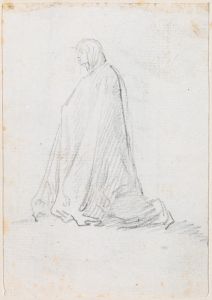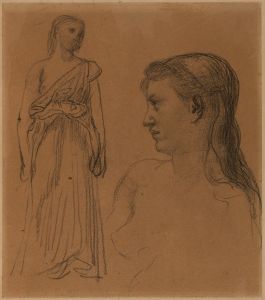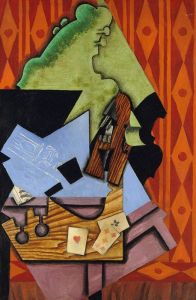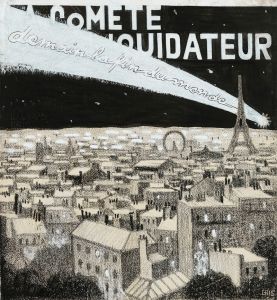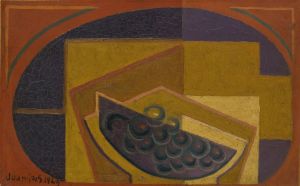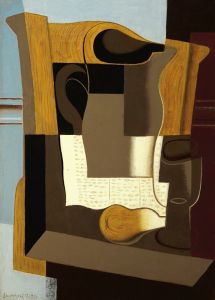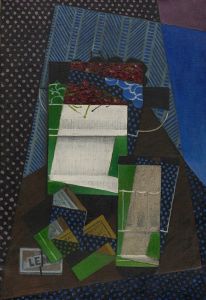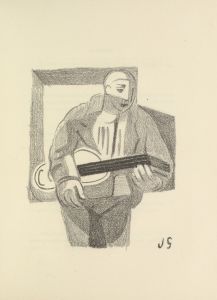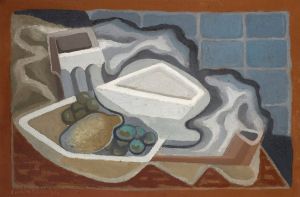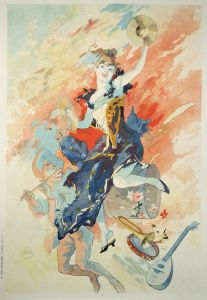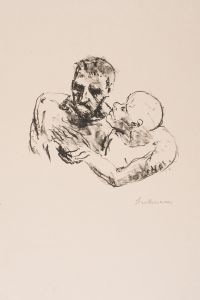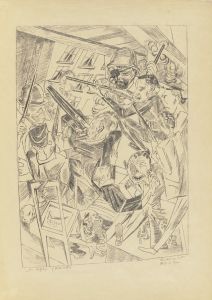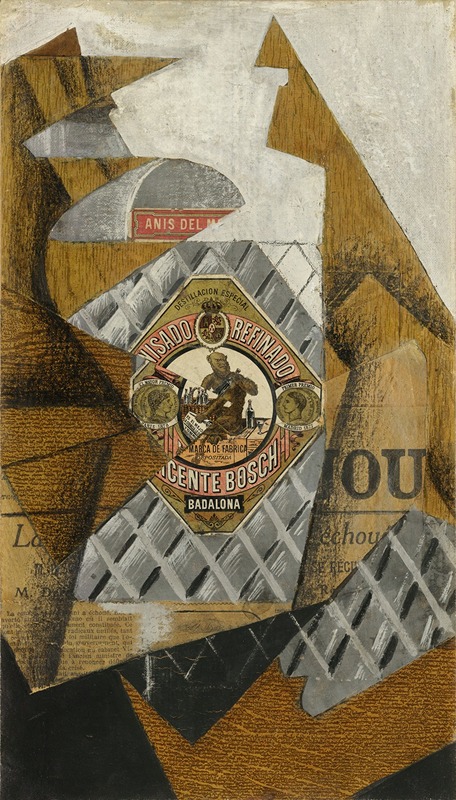
The Bottle of Anís del Mono
A hand-painted replica of Juan Gris’s masterpiece The Bottle of Anís del Mono, meticulously crafted by professional artists to capture the true essence of the original. Each piece is created with museum-quality canvas and rare mineral pigments, carefully painted by experienced artists with delicate brushstrokes and rich, layered colors to perfectly recreate the texture of the original artwork. Unlike machine-printed reproductions, this hand-painted version brings the painting to life, infused with the artist’s emotions and skill in every stroke. Whether for personal collection or home decoration, it instantly elevates the artistic atmosphere of any space.
"The Bottle of Anís del Mono" is a notable painting by the Spanish artist Juan Gris, created in 1914. Juan Gris, born José Victoriano González-Pérez in 1887, was a significant figure in the Cubist movement, which was pioneered by Pablo Picasso and Georges Braque. Gris is often recognized for his contributions to the development of Synthetic Cubism, a later phase of Cubism that incorporated brighter colors, simpler shapes, and a more playful approach to composition.
This particular painting, "The Bottle of Anís del Mono," exemplifies Gris's mature style, characterized by a meticulous balance between abstraction and representation. The work depicts a bottle of Anís del Mono, a popular Spanish anisette liqueur, which was a common subject in the still life genre during this period. Gris's choice of subject matter reflects the Cubist interest in everyday objects and their transformation into complex compositions.
In "The Bottle of Anís del Mono," Gris employs a combination of geometric shapes and fragmented forms to deconstruct the image of the bottle and its surrounding environment. The painting is executed with a palette of muted colors, including shades of brown, gray, and blue, which are typical of Gris's work during this time. The composition is carefully arranged to create a sense of harmony and balance, with overlapping planes and interlocking forms that guide the viewer's eye across the canvas.
Gris's technique in this painting involves the use of collage-like elements, a hallmark of Synthetic Cubism. He integrates various textures and patterns to suggest different materials, such as the glass of the bottle and the label's typography. This approach not only emphasizes the flatness of the canvas but also invites the viewer to engage with the painting as a constructed object, rather than a mere representation of reality.
"The Bottle of Anís del Mono" is significant not only for its aesthetic qualities but also for its reflection of the cultural and social context of early 20th-century Europe. The inclusion of a commercial product like Anís del Mono in a fine art painting highlights the intersection of art and consumer culture, a theme that resonates with the broader modernist movement.
Juan Gris's work, including this painting, played a crucial role in the evolution of Cubism and modern art. His ability to blend analytical precision with creative innovation set him apart from his contemporaries and solidified his legacy as a master of the Cubist style. "The Bottle of Anís del Mono" remains an important example of Gris's artistic vision and continues to be studied and admired for its contribution to the history of art.





